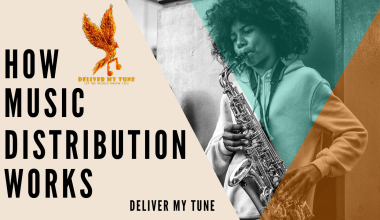When it comes to the music industry, the term “exclusive distribution rights” is commonly mentioned. These rights can be a crucial part of an artist’s career, influencing how and where their music is distributed. But what exactly it is, and why are they so important? In this blog, we will delve into the meaning, implications, and importance of its in the music industry.
What Are Exclusive Distribution Rights?
Exclusive distribution rights refer to the legal agreement where the rights to distribute a particular piece of content, such as a song, album, or any other form of media, are granted to a single distributor. This means that no other party can distribute the content without the consent of the rights holder. This kind of agreement is prevalent in various creative industries, including music, film, and publishing.
Key Elements of Exclusive Distribution Rights
- Single Distributor: Only one distributor is granted the rights to distribute the content.
- Control: The rights holder retains control over who can distribute their content.
- Legal Agreement: It is usually formalized through a contract outlining the terms and conditions.
- Duration: The agreement often specifies a time period for which the exclusive rights are valid.
Importance
1. Revenue Control
By granting exclusive distribution rights to a single distributor, artists and creators can better manage their revenue streams. The distributor is often more committed to promoting and selling the content effectively, knowing they are the sole distributor.
2. Brand Integrity
Exclusive distribution helps maintain the brand integrity of the content. When multiple distributors handle the same content, the chances of misrepresentation or poor quality control increase. With one distributor, consistency in branding and quality can be maintained.
3. Market Strategy
Having exclusive distribution rights allows for more strategic market positioning. The distributor can tailor marketing efforts to specific demographics or regions, optimizing the reach and impact of the content.
4. Simplified Licensing
Exclusive agreements simplify the licensing process. Instead of negotiating with multiple parties, the rights holder deals with a single distributor, reducing complexity and potential legal disputes.
How Exclusive Distribution Rights Work
The Agreement Process
The process begins with negotiations between the content creator (or their representative) and a potential distributor. The terms of the agreement typically include:
- Territory: The geographic area where the distributor has exclusive rights.
- Duration: How long the distributor has exclusive rights.
- Revenue Split: How revenue from sales or streams will be shared.
- Marketing and Promotion: Responsibilities for promoting the content.
Legal and Financial Aspects
Once both parties agree, a legal contract is drafted. This contract should detail every aspect of the agreement, including:
- Royalties: The percentage of sales or streams the artist will receive.
- Advances: Any upfront payments made to the artist.
- Termination Clauses: Conditions under which the agreement can be terminated.
Examples
Record Labels
Major record labels often secure exclusive distribution rights for their signed artists. This means the label is the sole distributor of the artist’s music, handling everything from production to marketing and sales.
Digital Platforms
Platforms like Spotify or Apple Music may negotiate exclusive streaming rights for certain albums or singles. This exclusivity can drive significant traffic to the platform, benefiting both the artist and the service provider.
Pros and Cons
Pros
- Focused Marketing: The distributor can concentrate all efforts on one artist, leading to potentially better marketing outcomes.
- Higher Advances: Distributors may offer higher advances to secure exclusive rights.
- Better Relationships: Closer working relationship with a single distributor can lead to better understanding and support.
Cons
- Dependence: Artists become highly dependent on one distributor, which can be risky if the distributor fails to deliver.
- Limited Reach: If the distributor does not have a wide reach, the artist’s music may not be as widely available.
- Contractual Obligations: Legal agreements can be binding and restrictive, limiting the artist’s flexibility.
FAQs
What is the difference between exclusive and non-exclusive distribution rights?
Exclusive distribution rights grant a single distributor the sole right to distribute content, while non-exclusive rights allow multiple distributors to handle the content simultaneously.
Can artists revoke exclusive distribution rights?
Yes, but it depends on the terms of the contract. Some contracts have termination clauses that allow artists to revoke rights under certain conditions.
Do exclusive distribution rights affect royalties?
It often come with negotiated royalty rates. These can be higher due to the exclusive nature of the agreement.
How do exclusive distribution rights impact global reach?
The impact on global reach depends on the distributor’s network. A well-connected distributor can enhance global reach, while a less established one may limit it.
Are exclusive distribution rights beneficial for independent artists?
It can be, provided the distributor has a strong track record and the terms are favorable. Independent artists should weigh the benefits against the potential risks.
Glossary
Distributor
An entity responsible for the marketing, promotion, and sale of content on behalf of the rights holder.
Royalties
Payments made to rights holders based on sales or streams of their content.
Contractual Obligations
Legal responsibilities agreed upon in a contract.
Revenue Split
The division of revenue generated from content between the rights holder and the distributor.
Termination Clause
A section in a contract that outlines conditions under which the agreement can be ended.
Conclusion
Exclusive distribution rights are a powerful tool in the music industry, providing a structured and potentially lucrative way for artists to manage their content distribution. By understanding the intricacies of these rights, artists can make informed decisions that align with their career goals and maximize their reach and revenue. Whether you are an independent artist or signed to a major label, knowing the ins and outs of it can help you navigate the complex landscape of music distribution more effectively.
For more insights on music distribution and other artist resources, stay tuned to our blog. If you have any questions, feel free to reach out or leave a comment below. Happy distributing!
For further reading, explore these related articles:
- What is YouTube Content ID?
- Deliver My Tune’s Exciting New Services!
- Know the Ways to Get the Music Sync Licensing
- What is Performance Royalty?
For additional resources on music marketing and distribution, visit Deliver My Tune.






